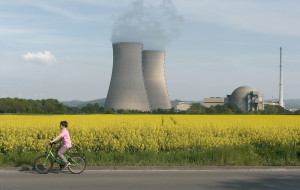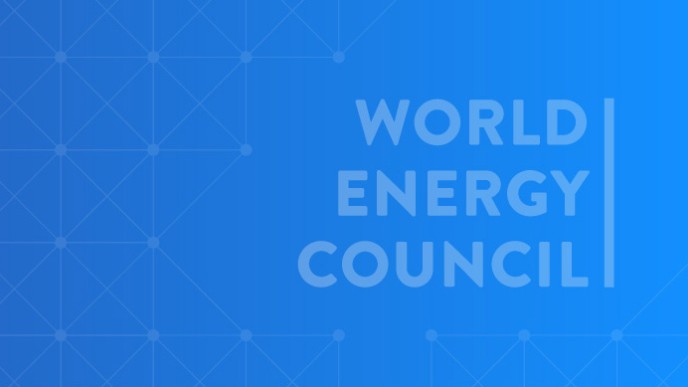With the exception of a few countries such as Japan, Germany and Switzerland, where immediately after the event public opinion was particularly sensitive to the safety issues related to nuclear technology, the accident in Fukushima has had only a marginal impact on the medium-term development of nuclear power generation. This takes into account the scale of nuclear capacity under construction in countries such as China and Russia and the life extension of many reactors in operation.
Apart from persistent local opposition to the long term development of nuclear after Fukushima, according to Clerici, a key issue will be the liability for damages from possible similar events exceeding 100 billion dollars for the hosting country together with the actual high costs associated with nuclear kWh. This is not a problem for countries such as China or Russia, but mainly for merchant plants – plants built/operated and owned by a private entity to produce electricity competing in the market - and for nations where an open market for generation is in place.
The paper lists a table of reactors in operation and under construction in the world the day before and 4 years after Fukushima. At the beginning of March 2011, just before the tsunami, Europe had the highest number of operating units, accounting for 45% of total nuclear power generation. On the other hand, Asia, with 66%, was the leader for reactors under construction. China alone had 42% of the total number of units under construction, while Russia had 17%.
At that time, the Chernobyl impact on the industry (1986) was no longer at the top of public priorities, which focused on waste disposal, the cost of nuclear power and on NIMBY (Not In My Back Yard) factors. A nuclear revival was therefore underway, driven by the volatility and rising fossil fuels prices, concerns about CO2 emissions and security of supply. As many as 158 reactors were planned and a further 323 proposed for construction in 47 countries.
Most countries did not put nuclear into question after Fukushima. It was mainly in Germany and Japan that the accident set off an immediate public debate. The plants under construction worldwide have not been cancelled, but slowed down due to stricter inspection practices. Germany, Switzerland, Italy and Venezuela decided to drop future projects. Switzerland has also cancelled the planned life extension for its 5 existing reactors; the remaining two will cease operation in 2024 and 2034.
Besides Japan, the most significant impact was recorded in Germany, a country that in 2010had produced 27.6% of its grid-connected electricity from nuclear, and which had plans for the life extension of its operational reactors, albeit with a 2.5 billion euros per year contribution from nuclear plants for the development of renewable sources.
A few days after Fukushima, German Chancellor Angela Merkel announced the intention to “shut down” the 7 oldest reactors (one more was already temporarily out of service). Following this, the German Government has ratified the permanent closure of these 8 power plants and established a plan for the closure of the remaining 9 units by 2022.
In Japan the electricity produced by nuclear before Fukushima accounted for 30% of the total power generation. With the damage to the Fukushima Daiichi plant and its decommissioning programme, only 10 of the 48 remaining reactors were in operation at the end of October 2011 and at March 2015 none. Following the implementation of costly safety-enhancing measures, the regulatory authority established after Fukushima issued permits to restart several reactors with the final restart decision left to the local communities. In any case, Japan never officially declared its intention to decommission any of the 48 reactors, which, according to the official statements of the International Atomic Energy Agency (IAEA), are still operational.
The 442 reactors declared as “operational” before Fukushima decreased immediately after the event by 12 units (8 in Germany and 4 in Japan) to 430 reactors. The table below summarises the nuclear status as of 11 March 2015. Although the number of reactors decreased, the total installed capacity increased by 3000 MW. According to the International Atomic Energy Agency (IAEA), the number of reactors under construction has increased from 65 to 68, without substantial changes. As to the shares of nuclear installed capacity between continents, the total output in 2013 amounted to 2,360TWh, compared to 2,600 TWh in 2010. Japan produced 300TWh less and Germany 40TWh, whereas other countries increased their production.
|
Reactors in operation and under construction worldwide the day before and 4 years after Fukushima Source:IAEA
|
||||||||
|
Geographical Area
|
Operating10 March 2011One day before Fukushima
|
Operating11 March 20154 years after Fukushima
|
Under construction10 March 2011One day before Fukushima
|
Under construction11 March 20154 years after Fukushima
|
||||
|
|
Number
|
MW
|
Number
|
MW
|
Number
|
MW
|
Number
|
MW
|
|
Europe
|
195
|
170,016
|
186
|
163,123
|
19
|
16,941
|
17
|
16,653
|
|
North America
|
124
|
114,616
|
120
|
113,306
|
1
|
1,165
|
5
|
5,633
|
|
Asia
|
117
|
85,750
|
127
|
96,420
|
43
|
42,819
|
44
|
42,569
|
|
South America
|
4
|
2,819
|
5
|
3,511
|
2
|
1,937
|
2
|
1,270
|
|
Africa
|
2
|
1,800
|
2
|
1,860
|
0
|
0
|
0
|
0
|
|
TOTAL
|
442
|
375,001
|
440
|
378,220
|
65
|
62,862
|
68
|
66,125
|
The following section briefly describes the situation as of March 2015 in 15 countries which together account for around 95% of global nuclear installed capacity in order of the total installed nuclear capacity:
United States: 99 reactors are in service, with a total installed capacity of 98GW. A further 5 reactors are under construction in those states outside the free market, which allows them to pass the cost of new investments on to consumers. 75 reactors have obtained a life extension of 20 years and another 19 reactors have applied for it. Due to the low cost of electricity generation from shale gas/coal and the absence of carbon dioxide emissions penalties, the construction of new reactors has been cancelled.
France: The 58 operational reactors, with a total installed capacity of 63GW, produce more than 75% of electricity in the country. Severe delays and the doubling of the cost for the new Flamanville reactor have been reported. Based on election statements of the current government, the future of nuclear is unclear. On the other hand, EDF has made significant investments in flexibility enhancement/upgrading and life extension of the existing generation portfolio.
Japan: 48 reactors with a total installed capacity of 42GW, not currently in operation, and 2 under construction. The pre-Fukushima plans targeted 41% of electricity generation coming from nuclear by 2017 and 50% by 2030. The future of nuclear remains dependent on political decisions. Japanese companies are heavily involved in reactor sales abroad.
Russia: 34 reactors for 42GW are currently in operation and nine under construction. The share of nuclear electricity generation is expected to grow from the current position of 18% to 25 to 30% in 2030 and to 40 to 50% in 2050. Strong marketing activities abroad account for more than 30 projects based on the BOO method (Build-Own-Operate) taking place or about to commence in Turkey, Belarus, Armenia, Hungary, Bangladesh, Vietnam, Jordan, Finland, India, South Africa and Bulgaria.
Korea: 24 reactors are in service totalling 22GW and four are under construction. Nuclear was expected to reach a share of 59% by 2022 compared to 23% today. However, due to local opposition, several alternatives are being considered. Korean companies are heavily involved in reactors sales abroad. Korean companies won a 20 billion dollar contract for four reactors for the total capacity of 5600MW which are under construction in the United Arab Emirates.
China: With 24 reactors in service totalling 20GW and 25 under construction, China is expected to become the leading nation in terms of nuclear installed capacity with 58GW in 2020 and 150GW in 2030. China is both investing and constructing nuclear power plants in other countries, including Great Britain (35% share of EDF UK), Pakistan and Romania.
Canada: 10 reactors in service totalling 13.5GW, with further development plans being delayed.
Ukraine: 15 reactors in service for 13GW and two under construction, with 42% of its electricity produced by nuclear power plants; earlier expansion plans are currently frozen.
Germany: 9 reactors with 12GW operational; the definitive phase-out from nuclear generation is planned for 2021/2022.
Sweden: 10 reactors in operation for 9.5GW; the replacement of the old reactors with new units is currently being debated.
Great Britain: 6 operating reactors with 9.5GW installed. Governments are in favour of replacing old by new nuclear plants on the same sites. 25GW from nuclear, of which 16 have been recently confirmed are expected by 2030. The local EDF subsidiary (35% Chinese ownership) expects to construct four reactors for 5,600MW at Hinkley Point by 2023. On other sites, the Horizon consortium is bidding for two to three reactors and the Toshiba W and GdF consortium for three more reactors. To facilitate the development plans as part of an energy security and zero emissions strategy, a preferential tariff for nuclear has been introduced. This is going to be the litmus test of compatibility for nuclear and free markets.
Spain: Seven reactors in service account together for 7GW. No clear decisions about the extension of the life of reactors have been made.
Belgium: The seven reactors for a total of 6GW supply about 50% of the country’s electricity generation. There is no clear strategy for nuclear.
India: 21 small reactors for 5.3GW in operation and 6 reactors under construction. 21,000 new MW are planned and a further 40,000 MW have been proposed, to be financed by foreign investors. Currently, all negotiations have been suspended due to the decision by the Indian Government to “not contribute to eventual damages from accidents”.
Taiwan: Six reactors with 5GW of installed capacity and 2 under construction. However, the constructions have been suspended due to the high cost and a potential referendum.
For further reading:
In 2011, The World Energy Council set up a nuclear task force to investigate the impact as well as the potential impact of the Fukushima incident on the future contribution of nuclear power to the global energy mix. As part of the scenarios study, the report provides a high level, fact-based and reasoned review of 2012 status and future prospects of the nuclear industry.
-
World Energy Perspective Report 2012: Nuclear Energy One Year After Fukushima
-
29 July, Bucharest: The New Face of Nuclear Energy, an event organised by the World Energy Council’s Romanian Member Committee.






